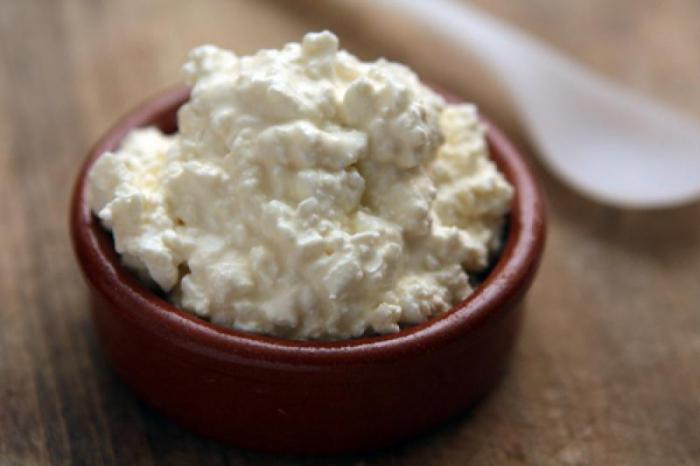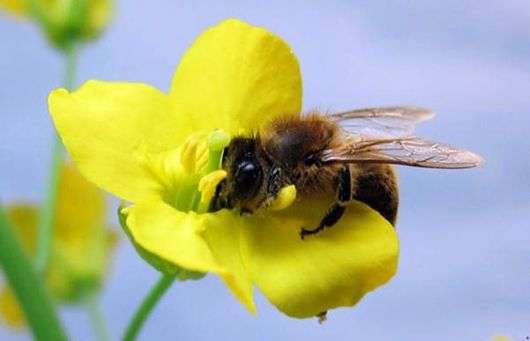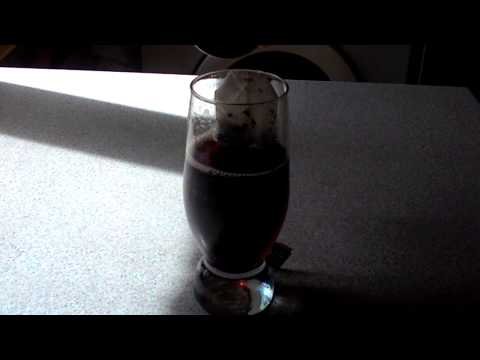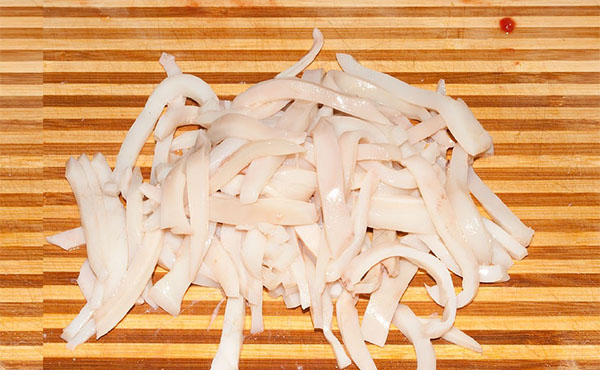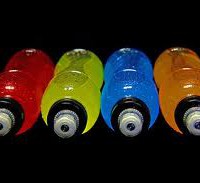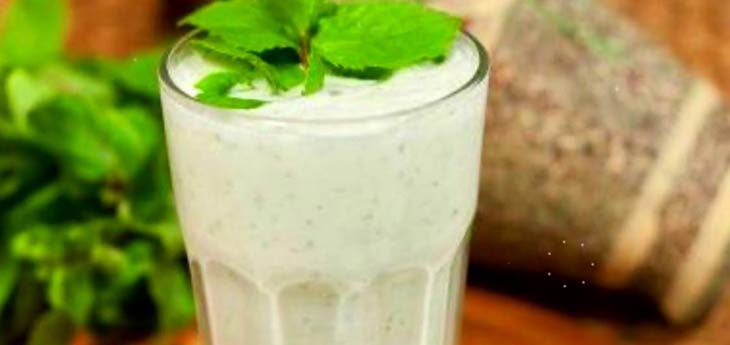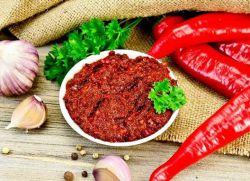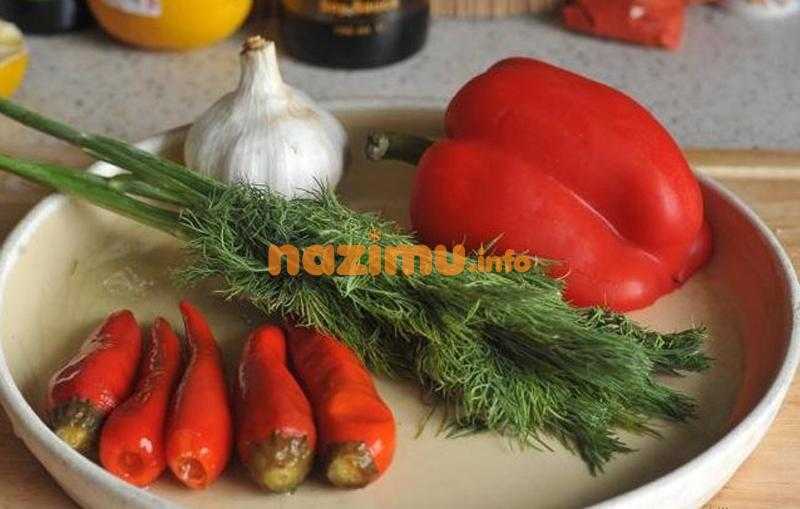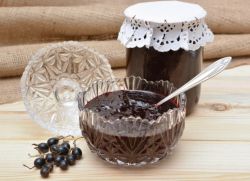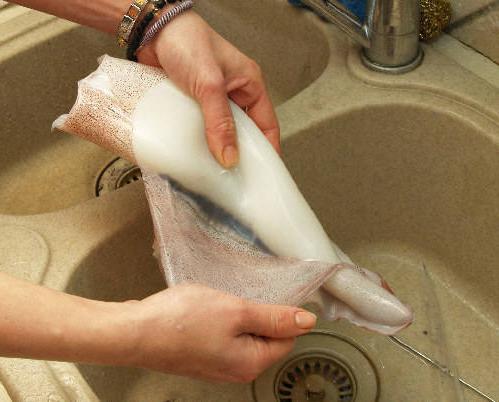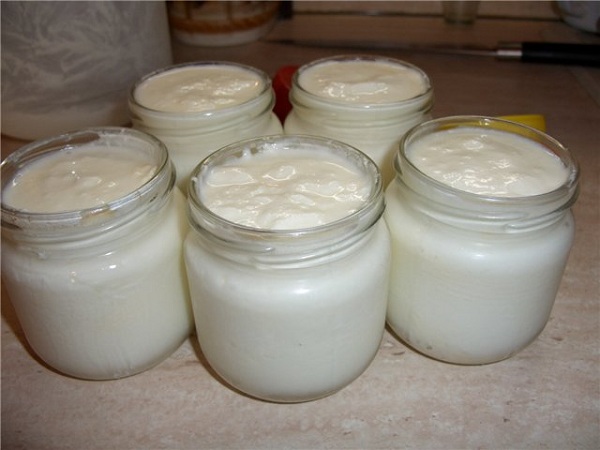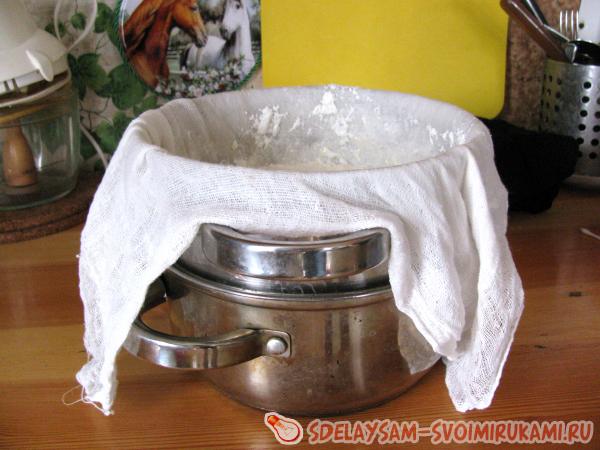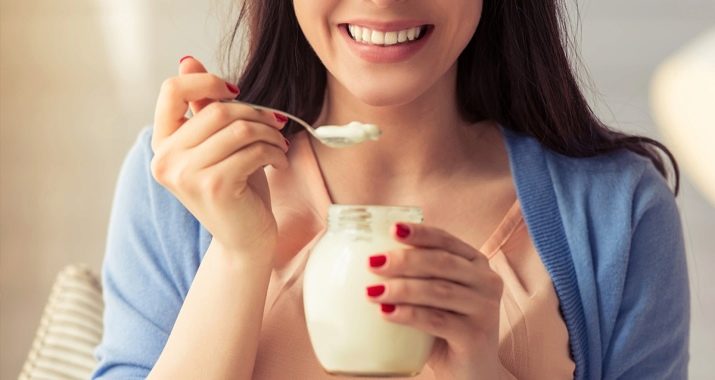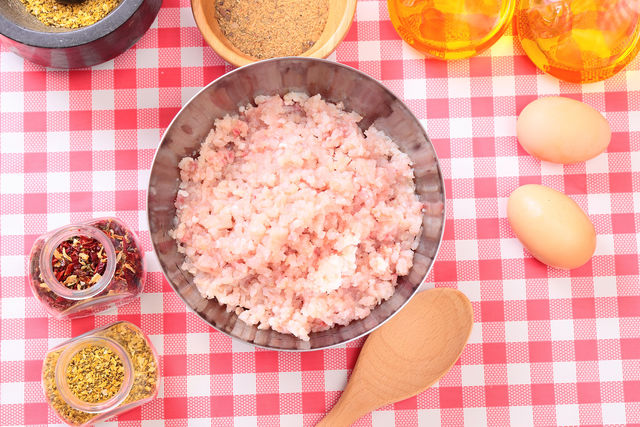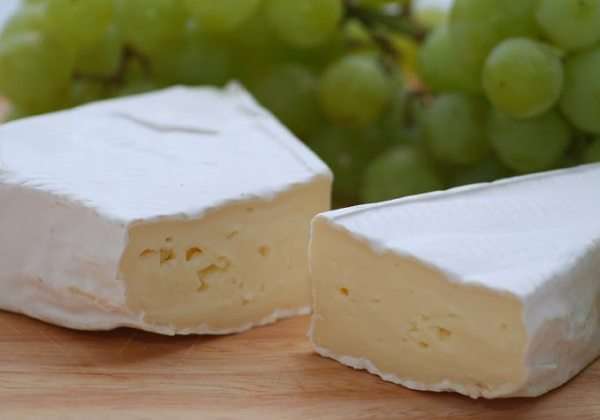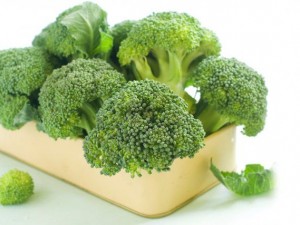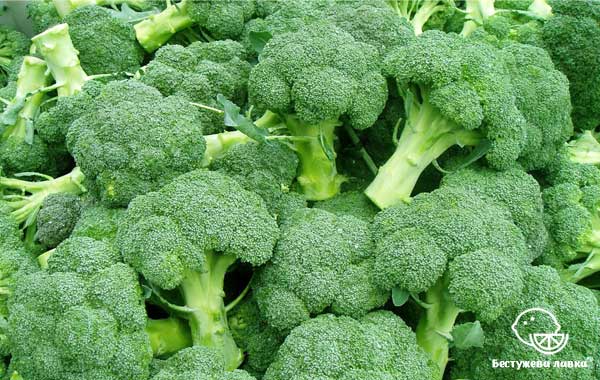How to cook an icing at home. Homemade miniion baby cookies with icing recipe
Doing it yourself with lace is not very difficult. However, the process requires a special creative imagination from the cook. After all, if you do not know how to draw, then you are unlikely to get beautiful and graceful figures. Although some housewives resort to one trick. They make patterns using various patterns.
Today we will tell you about how to make an aising for lace with your own hands. In addition, a master class on drawing various patterns will be presented to your attention. Using the tips below, you can decorate absolutely any desserts.
general information
Before telling you how to make an aising for lace with your own hands, you should tell what it really is.
Aising is a sugar-protein drawing mass, which is intended for the manufacture of three-dimensional patterns decorating confectionery. Initially, such a base turns white. But if there is a special need, then it can be made colored by adding various food colors.
Cooking features
Do-it-yourself ice lacing is quick and easy. After observing all the prescription requirements, you should have a fairly thick and plastic mass. As a rule, it is obtained by grinding sifted icing sugar with fresh egg white. Also, some acidifier (for example, fresh lemon juice, cremortartar, dry citric acid, etc.) is necessarily added to these ingredients. This is necessary in order to make the protein mass more plastic and supple.
How to make icing plastic?
As mentioned above, the icing for the cake or others should be as elastic as possible. Sometimes this effect is difficult to achieve, adding only one acidifier to the base. In this case, experienced cooks require additional use or a small amount of glycerin. However, the last ingredient can make the protein mass so sticky that it will be difficult for you to peel it from the polyethylene backing. That is why this component is recommended to be used when the subsequent detachment of ice is not supposed. As a rule, this happens in cases when the protein mass is deposited directly on the surface of the dessert.

Other ways to create
Do-it-yourself icing can be done not only with the use of protein. Indeed, to create such a drawing mass, there are other ingredients. For example, the use of albumin is a very popular way to prepare a confectionery base. One kilogram of this substance replaces about 316 egg whites. In addition, there are other ingredients that are most often used not at home, but in industrial production.
protein cooking workshop
When seeing the final results, many people have doubts as to whether they can make such an ornament with their own hands. I would like to say one thing: you won’t try, you won’t know.
In general, it should be noted that icing for a cake, as well as other confectionery products, is not as difficult to do as it seems from the very beginning. The main thing in this case is to strictly comply with all prescription requirements. Otherwise, the protein mass will not get such a consistency, which is extremely necessary for the preparation of various lace and patterns.
So, aising, the photo of which is presented in this article, requires the use of the following products:
- fresh chicken egg white - 1 pc.;
- sifted icing sugar - about 250 g;
- fresh lemon juice or dry citric acid - about ½ dessert spoon;
- strong glucose solution - dessert spoon (use as desired).
Product preparation process
Before you make an icing at home, you should prepare all the ingredients. First you need to carefully separate from the yolk. Moreover, hitting the second component to the first is unacceptable. Otherwise, the decoration will not work.

Having freed the protein from the yolk, it should be placed in a deep bowl and slightly beat with a fork. The objective of this procedure is not to make a lush and resistant foam, but to break the viscous structure of the component by converting it into a liquid mass. Excess air bubbles in the ice mass are not welcome.
As for the powder, it should be done with a coffee grinder or purchased in a store already ready-made. If you were unable to buy this product, we recommend that you simply sift granulated sugar through a very fine sieve. As you know, a sweet loose ingredient always contains a certain amount of powder.
The process of preparing the elastic mass
So, the time has come to tell you about how icing is done. A recipe, a master class on the preparation of this delicacy will certainly help you decorate cakes and other confectionery.
After the egg white is slightly beaten with a fork, sugar should be gradually added to it. In this case, the ingredients must be regularly ground until a homogeneous mass is obtained.
After a few minutes of intensive stirring (approximately in the middle of cooking), dry citric acid must be added to the sweet egg protein. If you decide to use fresh lemon juice, then it is better to pour it at the very end, along with strong By the way, in the end, you need to add the necessary food coloring to the obtained homogeneous mass (optional).
Thus, by adding sugar powder in egg white and grinding everything intensively, you should get a stable, uniform, viscous and plastic mass. On this, the preparation of ice is considered complete.

Types of drawing protein mass
We talked about how to make liquid drawing mass. But sometimes culinary experts also need flexible icing. How to cook it? This requires the use of more powdered sugar. In other words, it must be added until the protein mass ceases to adhere to the palms. As a result, you should get an icing mastic. She is good at covering figured cakes or pastries. To do this, the resulting mass must be lightly dusted with powdered sugar, and then rolled into the desired shape using a rolling pin. By the way, in mastic, as well as in liquid icing, you can also add giving it a particular shade.
What is it used for?
As you can see, aising for lace (the recipe for protein mass was considered above) does not require the use of many expensive and rare products. It is made from completely affordable and simple ingredients that are available to every housewife.
So why is such a mass necessary at all? As a rule, it is used to prepare unusual patterns for cakes. Although often culinary specialists use sweet rice mass to create an independent dessert. In this case, various figures and patterns are made from ice. If you decide to please your loved ones with original sweetness, we suggest creating a Christmas tree, various animals, snowflakes and more.
Forms of jewelry
Those chefs who do not know how to beautifully draw patterns use stencils for icing. It can be children's books with large flowers, animals, butterflies, snowflakes. In this case, you will get flat decorations that can be easily stuck into the surface of the cake or cake.
If you need to make a three-dimensional pattern, then we suggest using a book spread. This method often forms fluttering butterflies and other laces.

There is another original technique, thanks to which you can independently make complex structures out of ice. For example, at home, carriages, strollers, cars, etc. For this, it is necessary to make stencils of individual parts of the object in advance, apply the protein mass to them using a cornet (through the film) and leave at room temperature for 2 days. After this time, the icing will completely harden. In the future, all the details of the three-dimensional structure should be interconnected using thick sugar syrup for this.
We decorate protein patterns
Now you know how to use stencils for icing. But if you just need to make beautiful volumetric or flat patterns, then we suggest to additionally decorate them with the help of confectionery beads, powders and other things. However, it is recommended to do this immediately after the protein mass is applied to the stencil. After all, after hardening, the icing becomes solid, and nothing can be glued to it. At least if you do not use a component such as thick sugar syrup.
The procedure for working with the drawing protein mass
If you don’t know how to draw patterns by yourself using icing, we recommend using ready-made templates. Or you can just apply children's coloring books. So, let’s take a closer look at how to work with the drawing protein mass.
1. A plastic film is applied to the selected paper template or placed in a regular transparent document bag. The main advantage of such a bag is that the protein mass leaves it very well. If you doubt it, then for better adhesion of the formed products, the plastic film is lubricated with a small layer of olive oil.

2. Freshly prepared rice protein mass is placed in a special cornet, on which a suitable nozzle is worn in advance. If you don’t have such a pastry bag, then an ordinary plastic bag is also suitable, in which you need to cut a corner.
3. Squeeze the icing onto the stencil, or rather, onto the plastic film laid on it, should be slowly and evenly. If you have artistic skills, you can do without patterns, painting with a protein mass, only armed with imagination. It should be noted that icing is often deposited directly on the surface of the finished confectionery. At the same time, you should know that in no case should the paint mass be applied to cream, biscuit or other wet surfaces.
4. After the icing has been deposited, it should be left to dry at room temperature. This can take you about 1-3 days, depending on the size of the pattern and the humidity of the room.
5. Dried jewelry and details are carefully removed from the substrate, and then used for their intended purpose. It should be noted that it is better to carry out this action on the edge of a flat surface, starting from the corner of the plastic film, which is carefully pulled down.
Due to the fact that such decorations are very fragile, they should be prepared with a margin in quantity. If the products break down during removal from the substrate, then they can be used as a separate dessert and simply served with tea.
Now you know how to quickly and easily make an ice mass at home. To make sure that you have prepared the sweet base correctly, you should look at its consistency. Classic aising should not drain on inclines. In the event that the mass is liquid, then the formed products should first be dried to thicken in a horizontal position. And only then place on a curved surface.

If you need to get openwork spherical products, then the protein mass needs to be applied to inflated balloons (air) lubricated with olive oil. After the cream has dried, they are pierced, and then the shells are removed from the resulting jewelry.
Storage method
Jewelry and figurines made from icing can be stored for a long time if they are placed in boxes and kept at room temperature. The humidity should not be too high.
It should also be noted that patterns of protein mass should in no case be stored in a refrigerator. After all, after staying in cold air they quickly liquefy. That is why pre-shaped decorations are placed on cakes and pastries exclusively before serving to the festive table.
They love everyone. Cookies, muffins, gingerbread cookies - all this improves the mood. And when they are also beautifully decorated, they look twice as appetizing. Professional confectioners create works of art that sometimes it’s even a pity to eat. Housewives today also do not lag behind them in the desire to make a real holiday for relatives.
Decoration sweets
And other baking is very diverse. Since ancient times, they are decorated with various creams, fruits, chocolate chips, nuts and coconut. A more difficult option is to fill the jelly, sugar fondant coating, chocolate icing (ganache). Foreign notions came to us: mastic and icing. These are more complex baking coating options, including a variety of figures and decorative elements. Aisle decoration is considered the height of confectionery art. Some masters create masterpieces from which they are simply breathtaking. However, knowing some secrets, each hostess with a certain dexterity and a share of patience will be able to amaze her guests.
Aising - what is it?
From English, this word is translated as “icing”, the full name is “Royal Icing”. Aising came to us from England, where confectioners at the court of monarchs decorated cakes in this way. This is a mass for drawing and creating edible jewelry based on protein and sugar. Aising is different in composition and consistency depending on the purpose: contour decor, air decorations or sculpting products.
- Plastic - used for sculpting jewelry and creating lace. The helpers here will be a silicone mat for icing and shape). The mass is placed in the base, slightly dried, carefully removed and decoratively laid on the cake. Plastic icing is somewhat different from the classic one - in composition it is closer to mastic.
- Classic - a more liquid mass, which is applied directly to the confectionery, or the decor is done on a stencil, and after solidification, the details are folded into figures. It has a very fragile structure.
We’ll tell you how to make a classic icing for gingerbread, cookies, cakes and other pastries.
Cooking process

The recipe for icing is actually incredibly simple. You will need:
- icing sugar - 150 g,
- raw egg white - 1 pc.,
- lemon juice - 1 tsp.
From this composition, a rather large amount of mass is obtained, which is enough to decorate a small cake or a kilogram of gingerbread. Any pastry looks much more appetizing with a decor such as aising. How to cook it? Consider this process step by step.
- Separate the protein from the yolk. Make sure that not a drop of yolk gets into a bowl of protein. If this happens, better take another egg.
- Beat the whisk with a whisk or mixer at low speed. No need to whip it into lush foam - just knead until smooth.
- Add the sifted icing sugar in small portions without ceasing to beat the mass.
- Pour in the lemon juice at the end, which will give the glaze a shine.
The perfect decoration for the pastry is ready. Nothing complicated, right?
Consistency
The amount of powdered sugar and the whipping time may vary slightly depending on what your icing is for. Aising is usually distinguished by density:
- Mass consistency of thick sour cream. It is obtained by using a slightly smaller amount of powder. It reminds us of our usual icing sugar, which is decorated with Easter cakes. Such an aising is used for gingerbread cookies and cookies, the top of which is poured homogeneous evenly. The readiness of the mass can be checked by drawing it with a knife. For some time, a trace from the cut remains, which is gradually smoothed out, and the glaze becomes homogeneous and perfectly even again. If this does not happen, then you have beaten the mass too much, and such an aising will not work for pouring - the top of the cookies will be ribbed and uneven. However, do not be upset, because you just prepared the next version of the glaze.
- Soft peaks. Such an aising is ideal for lettering and linear decor, which is applied directly to the confectionery. Preparedness is checked very simply: remove a spoon or a whisk from the protein mass - the icing should hang from it with soft peaks, slightly bending depending on the rotation of the spoon.
- Solid peaks. This is a denser mass. When a spoon is reached, the icing stretches behind it and remains on the surface with firm, solid peaks. Such an aising is ideal for squeezing patterns from a pastry bag with various nozzles directly onto a cake or cookie. Also, such a glaze is suitable for complex jewelry, which is first squeezed onto a stencil, and after solidification are assembled into figures.
Little secrets

Royal frosting seems unbelievable, and are you afraid to even try it? Do not worry, use the classic recipe, pay attention to some nuances, and you will see - preparing an aising will be easy. You will surely succeed!
Colour
Glaze can be colored using food colors. To do this, divide the mass into several parts and add the desired shade to each. Dyes come in with different properties and degrees of intensity, so add a little color a little while mixing the mass well. Use the instructions printed on the package.
Powdered sugar
Making icing is possible only with powder - sugar will not work here, as it will not have time to dissolve and make the mass heavy. Moreover, it is advisable to sift the icing sugar before, saturating with oxygen. If you have a good electric mill, you can grind icing sugar yourself.
Consistency
You can adjust the mass density. If you beat it too much and it turns out to be too liquid, just add the powdered sugar. If the icing is very dense, it will be difficult to squeeze it out of the pastry bag. In this case, add egg white to it.
Storage
If you have not used the entire mass immediately, you can store it in a tightly closed container for 3-5 days. Remember that in air, glaze hardens quickly. You can use the remaining icing for cookies. It can be any recipe, except for wet, too porous baking.
Lemon acid
If desired, a glaze component such as lemon juice can be replaced with citric acid.
Create figures

If you create volumetric figures by squeezing the mass onto a stencil, grease it with a little bit of olive oil in advance for easier separation of dried parts. Ordinary sunflower oil is not suitable here.
To create volumetric colors and other figures, apply icing on the stencil, and then lay it on any curved surface. For example, a flower can be placed in a cup by spreading the leaves out; butterflies - on the fold of the book (when they dry, you get the fluttering effect).
Incredibly beautiful large volumetric jewelry from ice: shoes, carriages, houses, towers and more. It seems that it is impossible to do, but in fact, everything is not so scary. These figures are made up of many individual parts, which are previously applied to the stencil and dried, and then connected together with a cream.
Remember that the average drying time of the glaze is 12 hours, so you need to apply it on the finished cake in advance. Iceing for cookies also takes time to dry, otherwise the cakes will simply stick together. It is better to start preparing volumetric or prefabricated figures that are pre-applied on the stencil in a day, so that they have time to dry well and easily assemble. Do them with a margin, because the parts are very fragile and can break during the assembly process.
Common mistakes
It seems that they did everything according to the recipe, but the icing did not work out? Here are the most common mistakes that can completely ruin the icing:
- Lemon juice must be clearly added according to the recipe - one teaspoon per protein from one egg and 150 grams of powder. If you put too much protein, the glaze will be too fragile.
- Carefully add icing sugar, depending on the desired consistency. Too liquid mass will spread over the baking, too dense it will be difficult to squeeze out of the pastry bag. Adjust the density of the icing with protein and powder.
- It takes air to dry the glaze. Do not put the decorated product or drying parts of future figures in the refrigerator - the aising will become sour and flow.
- For the same reason, do not apply mass to cream or wet biscuits. Application on dry biscuits and cakes, previously coated with a base - mastic, marzipan, ganache.

Accessories
You can’t do without auxiliary accessories if you are preparing an icing. What it is? First of all - a pastry bag. It is impossible to work with hands with classical royal glaze of any density, so you can’t do without a pastry bag or syringe. Using various nozzles, you can create beautiful patterns, but more often glaze is drawn in straight lines. The real helpers will be the icing pencils, acting like a syringe, but with their help, especially thin lines are created.
Stencils, silicone rugs and molds help create complex patterned jewelry that is hard to make by hand. You can apply the pattern or its details to plain baking paper, having previously laid the contours of the future product under it.
Jewelry
Professional confectioners create real works of art from ice. No wonder it is called royal icing - the confectionery decorated with it is truly worthy of kings. We’ll reveal some of the secrets of the masters, using which you can prepare the most beautiful icing jewelry at home.
Biscuit

Glazing cookies and gingerbread cookies is a great start to your workout. Drawings can be both the simplest and the most complicated by a large number of small parts. Aising for cookies, the recipe of which can be any (sandy and ginger is well suited), can be of two types: soft peaks (for contours and drawings) and the consistency of thick sour cream (for filling).
If you want to completely fill the surface of the cookie with icing, apply a contour along the edges, let it dry slightly and fill the rest with a soft mass. The circuit will restrain her, not allowing to settle. Use fine outline nozzles or icing pencils to apply fine lines and patterns.
Lace of kings
The thin lace that decorates the cakes using icing looks incredibly beautiful. edible glaze of very delicate work. There are three options for creating it:
- Application of a plastic glaze to a silicone mat. After drying, this lace can be bent and laid as you like. It is quite convenient to use, but it cannot be cooked from a classic glaze.
- Drawing a lace-shaped pattern directly on the surface of the cake using a pastry bag with a thin nozzle or icing pencils.
- Drawing lace on the stencil. After drying, they are carefully transferred to baking.
Iceing: a master class

The airy lace, covering the cake with a dome, or decorating with balls looks very beautiful, and it seems that it is impossible to do it manually. However, having learned a couple of secrets, each housewife will be able to perform such a miracle. Of course, icing will help in this. How to cook it? Introducing step by step instructions:
- Take a regular inflatable balloon. Wash it well and inflate to the size you want to see the final decor.
- Prepare the glaze to the consistency of solid peaks. A softer mass simply drains, and the pattern will not work.
- Fill a pastry bag with a thin nozzle or an icing pencil.
- Squeeze the icing with a thin branchy thread around the ball, imitating lace, braiding the ball fully or half.
- Leave to dry for at least 12 hours. After that, pierce the ball and carefully pull out the rest.
Just a magical cake decoration ready!
Conclusion
From this article, you learned everything about icing: what it is and how to cook it. Adhering to simple rules, even at home you can create incomparable culinary masterpieces worthy of the highest praise.
To create a true confectionery masterpiece at home, you need to not only knead the dough correctly and bake delicious gingerbread cookies or a cake. An equally important step is the decoration of baking. And here, iceberg will come to the rescue, the recipes of which are simple and accessible for everyone. We invite you to our culinary master class.
Confectionery Secrets
Aising is a thick plastic mass of granulated sugar and egg whites used to decorate bulk baking. Often they make white icing, but with the help of special dyes you can give it any shade.
Before we move on to icing recipes at home, let's look at the features of working with it:
- To apply an icing to pastries, you need to prepare templates in advance. These can be drawings on plain paper or ready-made special contours.
- The template must be covered with a film for food. Attention: parchment paper and tracing paper are not suitable for this purpose, since the icing can stick to them, respectively, the picture will be damaged.
- The food film should first be greased with olive oil.
- Freshly prepared protein-sugar mass is applied using a confectionery syringe. Experienced hostesses use a regular package, notching its corner.
- It is important to achieve the correct consistency of icing. So, the icing should not be too liquid, otherwise it will spread beyond the boundaries of the figure. But the thick mass will be difficult to squeeze out of the syringe.
- A little secret: if the aising is too thick, you can make any figures from it, like plasticine.
- The pattern from the icing on the confectionery product should not be thick, as this will complicate the process of drying it.
- The cling film with the finished pattern needs to be dried for about three days.
- Do not apply icing on biscuit and other dry surfaces. In this case, decorate the product with ice only before serving the dessert on the table.
- Gingerbread cookies, cookies and other pastries are decorated with icing only after the confectionery is completely cooled.
Let's move on to the practical part of our master class and prepare an icing for the gingerbread cookies. Its recipe is quite simple, the main thing is to make the icing correctly. And in order to make the icing work, as they say, for glory, we will prepare sugar powder in advance on our own. To do this, grind sugar in a coffee grinder.

Composition:
- 250 g of powdered sugar;
- 1 egg white
- confectionery dyes.
Cooking:

We complicate our task and make lace balls for decorating the cake out of icing. To do this, we need to purchase several small balloons in advance and prepare the threads. Just remember that the icing will dry out for 2-3 days, and if you have a holiday planned, you need to do it in advance. Having mastered the principle of creating shapes for decorating a cake from iceberg using the example of a ball, you can create any patterns in the future.

Composition:
- 1 egg white
- 250 g of powdered sugar;
- olive oil;
- ¼ tsp lemon juice.
Necessary materials:
- 5-6 pcs. small balloons;
- food film;
- baking paper;
- threads.
Cooking:

Sweets are the most delicious and incredible temptation that only a few can resist. Gingerbread cookies, cakes, muffins and muffins, cakes, casseroles and pies, all this significantly improves the mood, allows you to pamper not only yourself, but also your loved ones. Most pastry chefs are able to create real pastry masterpieces, real works of art, but also beginner culinary specialists are not behind them. Of particular note is such a variety of desserts as ice, it is very often used in the decoration of cakes and cakes. Thanks to detailed recipes, everyone has the opportunity to make this treat.
Glaze classification and features
Translated from English, the name of the presented dessert means - “royal icing”. The recipe also appeared in Russia, when confectionery was decorated with edible lace and flowers at the court of the monarchs. As for icing, this is a special mass for decoration, made using powder and egg white.
Types of Aising:
- Classical. This is a special mass having a sufficiently liquid substance. For the proposed type of glaze, incredible fragility is inherent. Ready delicacies are usually applied to the surface of confectionery products or apply appropriate stencils.
- Plastic. If you prepare an aising according to such a recipe, the finished mass can be safely used to make edible lace and figures. The composition resembles confectionery mastic, which is often used for decorating cakes. It is necessary to work with plastic icing in accordance with all the rules, for this it is worth carrying a silicone mat and molds. The formed mass is poured into molds, slightly dried, then an amazing result is obtained that can hit any connoisseur of desserts.
Numerous recipes allow you to achieve a different consistency. It is important to know that the amount of powdered sugar directly depends on the purpose of the treat.
Classification of Aisings by Density:
- The consistency of thick sour cream. A similar mixture can be obtained by using a small amount of powder. The final result resembles the classic type of glaze for covering cakes, pies. Such aisation is used in the manufacture of gingerbread, cookies, when the surface of the product must be filled with a homogeneous mass.
- Soft peaks. To make a drawing, inscription or contour, this type of aising is useful. Readiness is checked very simply, it is enough to remove the whisk from the egg mass, it will have to hang from it with soft and gentle peaks, which slightly bend if you turn the tool.
- Solid peaks. This type of confectionery glaze is characterized by a special density. Removing the whisk from the mass obtained, it can be noted that the icing stretches and immediately solidifies with fairly dense, solid peaks. Often, icing is placed in a pastry bag, after which muffins, cakes, pastries, and cookies are decorated. To make volumetric or flat figures with a stencil, you can safely use the finished mass.
Given the chic assortment of the proposed goodies, you should familiarize yourself with step-by-step recipes for its preparation.
How to cook traditional icing
Classical glaze of English origin is made on the basis of egg protein, lemon juice and powdered sugar. To make the mass more flexible, the composition will be more complicated, and it will also take much more time to whip.
There are many detailed and affordable recipes that allow you to cook a treat at home. It’s easy to choose a specific type of aising, it’s enough to know what purpose it will be used for.
It’s easy to prepare a drawing consistency for decorating cakes, as products for its manufacture are available in any refrigerator. Thanks to this glaze, it is possible to decorate cupcakes, cookies and cakes, turning them into a solemn and even exquisite dessert.
That is why no one can remain indifferent to such a culinary creation. The proposed recipe is simple and affordable, its quantity is enough to decorate a medium-sized cake and one kilogram of gingerbread.
With the help of such a glaze you can prepare delicious, festive, colorful and very original desserts. The classic icing takes thirty minutes to cook. One hundred grams of goodies contains about 305 kilocalories.

The list of necessary components:
- lemon juice - 1 teaspoon;
- egg white - 1 pc.;
- powdered sugar - 155 grams.
The specifics of step-by-step preparation of traditional delicacies:
- After reading the recipe, you should prepare the marked ingredients.
- First of all, it is necessary to carefully separate the yolk from the protein. If even a small drop of yolk gets into the protein, the cream will not work, so you can immediately change this component to a new one.
- Next, beat the protein with a mixer or a blender, you can use the usual whisk to get a homogeneous substance.
- Measure the right amount of powdered sugar, then sift several times through a special sieve.
- The powder is added to the beaten egg white in small portions, the whipping process should not stop.
- To make the icing glossy, you can add a little.
The resulting glaze is used to decorate any baking and confectionery.
Secrets of making plastic icebergs
A more complex composition will help to form flowers from a cream or other decorations, since the finished mass should have a fairly dense consistency. Flexible glaze can be made thanks to the silicone mat.
Considering that rare ingredients may be present in the composition, they can be ordered in specialized stores on the Internet. As for calorie content, there are about 325 kilocalories in one hundred grams of glaze. The cooking time is forty-five minutes.

List of required products:
- water - 50 milliliters;
- fructose - 20 grams;
- food coloring - ¼ teaspoon;
- corn starch - 20 grams;
- invert syrup - 1 teaspoon;
- food glycerin - 1 teaspoon;
- citrus pectin - 1 teaspoon;
- polysorbate-80 (food supplement) - 3 drops.
Features of step-by-step preparation of plastic glaze:
- Carefully study the recipe, purchase all the necessary components, they are easy to find in specialized candy stores.
- In one container, mix pectin, corn starch and fructose, as well as white food coloring.
- You will need water, but only at room temperature, it should be poured into a prepared container, and then add the prepared dry mixture.
- Mix all the ingredients into a single whole, then leave for thirty minutes.
- After a specified period of time, mix again, then immediately pour invert syrup.
- Mix polysorbate with glycerin, send to container. Prepare a mat from silicone, it is covered with a finished mass.
- The oven must be warmed up to 100 degrees, send the mat with the prepared mass for ten minutes. Then it should be removed from the oven, cool. You may notice that the finished mixture dries up and takes on the desired shape.
- The plastic pattern needs to be separated from the special rug, used for decorating various baked goods and sweet products.
Despite the complex and rich composition of the presented dessert, the result is simply magnificent. If you spend a little time and effort cooking it, you can create a real culinary masterpiece.
Secrets of sweet figures
The simplest and most beautiful type of volumetric decoration from English glaze is a unique three-dimensional butterfly. To create it, you need a special stencil with a file, the sheet is placed on the prepared open book. The volume and size of the butterfly is adjusted by the angle of the pages.

To make the shape semicircular, place the stencil with the file on the cylinder. For such purposes, a glass or a plastic bottle is perfect. A very colorful and bright element of the decor is the ball, namely many balls, openwork hemisphere, which will turn the most ordinary pastries into a real culinary creation.
To prepare such figures, you will need a regular balloon, which is inflated to a specific size. Then the surface is greased with olive oil, using a cotton wool, then you can start the process. Carefully apply the pattern, the mixture should completely dry, to do this, leave the ball in a dry and calm place.
Recently, jewelry in the appropriate format, namely 3D, has been very popular among confectioners. The manufacturing technology is quite simple, it involves gluing together flat parts. As for the complexity of the process, this is the selection of the right stencil for all parts of the product.
Before mounting a 3D figure in 3D format, it is important to wait, since all the details must be thoroughly dried, otherwise nothing will work. In order for the individual parts to stick together, you should use the icing prepared for drawing. In addition, ordinary whipped protein is suitable for such purposes.
It is interesting that the glaze will dry for at least twelve hours, so it is worth considering these time frames before you start cooking. That is why, when making a pie or cake for a festive celebration, voluminous figures are made a day before, in order to be in time. Given the fact that such edible parts are very fragile and brittle, they are made with a margin.
Today it is very difficult to find someone who would not like sweet desserts, such as cakes. There are a lot of such recipes in the culinary, they can be decorated with various patterns, inscriptions or aising. Probably not everyone knows what it is. We will try to figure this out. So, in translation from English, this term means “ice pattern”. And this is not surprising, since products from it look like ice (in color and consistency). Aising, the recipe of which we will definitely find out today, makes it possible to create unusual decorations not only for desserts, but also for various dishes. Properly made, it has a matte finish and tremendous strength. So, we will try to understand this issue in more detail.
What is an "icing"?
Aising is a thick plastic mass of sugar and protein to create confectionery decorations that have volume. Usually this mass is white, but with the help of food colors it can be given any shades. Iceing, the recipe of which will be given below, is done by grinding powdered sugar with fresh egg white. Lemon juice or acid, glucose syrup, glycerin, etc. are added to this mixture.
Work with aising
To work with flexible mass, pre-prepared templates are required, for example, drawings on paper or ready-made contours. A cling film is placed on such a drawing or it is placed in a file. In this case, it is not recommended to use parchment or tracing paper, since the icing adheres very strongly to them and then does not separate. So, the film is smeared with a layer of olive (this is important!) Oil. Fresh protein mass is placed in a confectionery envelope or syringe. However, it should not be liquid, so as not to spread out along the contours of the picture. A thick mixture, on the contrary, will be badly squeezed out of the envelope. However, in this case, it can be molded from it in the same way as clay.

All elements of the picture should not be thick. If there is a desire to get multi-colored icing, the recipe of which is very simple, food colors are added to the mass. You can also apply the mixture to the finished cooled confectionery, for example, cookies or gingerbread cookies, chocolate icing. Do not apply it on biscuits or other non-dry surfaces. Only finished icing jewelry is placed on them before serving. So, a film with a drawing-pattern is dried for about three days. Then the jewelry is carefully removed.

Laced aisle jewelry
In this case, a mass of protein and sugar, that is, icing, the recipe of which is attached, is placed on small balloons, they must first be inflated and greased with oil. After the pattern dries, the ball is simply blown off and removed from the product. This should be done carefully, as the resulting products are very fragile. It is recommended to do them with a small margin. The broken part can be glued with egg white mixed with powdered sugar. Such jewelry is stored at room temperature in a box. Let's consider in more detail the recipe for icing at home.
Heart from Aising
Ingredients: twenty grams of egg white, one hundred and fifty grams of icing sugar, fifteen drops of lemon juice, food coloring red, vegetable oil, file and heart pattern.

Cooking icing
Protein is gently mixed, but not whipped. The powder is added gradually, without ceasing to interfere, put lemon juice with red food coloring dissolved in it. All is well mixed until the color becomes uniform. The mass is transferred to a confectionery envelope or bag with a nozzle and left for some time, covering the hole with a wet towel so that it does not dry.
Template preparation
After we examined the recipe for icing for decorating cakes, you need to make a template. For this, a heart of the right size is cut out of cardboard. Using plasticine, they give it shape and volume. To do this, clay is placed on top of cardboard. Next, the template is placed in a file and pressed tightly so that all the air comes out. Under the cardboard, the file is collected in a knot so that it lies smoothly and tightly on the plasticine. File smeared with vegetable oil.
Patterning
Further along the contour draw a thick line, and then make any pattern at your discretion. It can be intertwined lines, squares, ovals, etc. Ready icing is left for one night - to dry. Then they begin to carefully remove it so as not to break and crush it. Having made two such hearts, they are glued together, the same icing is used for this, and the jewelry is put to dry again.

Frozen Aisle Lace
Ingredients: one protein, two hundred grams of powdered sugar, half a spoonful of citric acid. Equipment: olive oil, scraper, silicone mat with patterns, sponge.
Cooking
The recipe for aising for lace is no different from the one we examined above. To do this, egg white is mixed (but not beaten) with sugar and citric acid. They interfere until a thick mass is obtained.
Cooking lace
Egg mass is distributed over the entire surface of the mat, removing excess. Then put everything in a preheated oven and bake for three or five minutes, depending on the type of oven. Over time, the finished lace is carefully removed and patterns are already made of it according to your desire. You can decorate the cake by sticking it on the sides. And you can make all kinds of figures - it all depends on the imagination of the cook.
As you can see, this icing recipe for the cake is very fast. Laces are ready in fifteen minutes, so you can save time for cooking other festive dishes.

Beautiful figures from aising
Ingredients: one egg, two hundred grams of icing sugar, one teaspoon of citric acid.
Doing ice (recipe): master class
Beat the protein with a fork until a light foam appears. Then, powdered sugar is added in portions, grinding the mixture to a homogeneous mass, and then citric acid, while continuing to mix. A homogeneous stable protein mass of a thick consistency should be obtained. Add food coloring if desired. That's ready icing! As it turned out, everything is quite simple. It must be transferred to a pastry bag.
Jewelry Making
The balls of the required size are inflated, with a brush they are lubricated with vegetable oil, olive is best in this case. Top begin to apply an ornament. When the patterns are applied, the ball is suspended so that it dries. So it should hang for about a day.
Over time, the ball is pierced with a needle and removed from the sugar figure. With such sweet balls that are prepared, you can decorate cakes or Christmas compositions.
Finally ...

Thus, it is not difficult to make flexible icing, the recipe of which is already known to us. Using sugar mass, you can create not only lace and balls, but also make candle holders, butterflies, snowflakes and more. For this, only stencils are required, which can easily be found in children's decorations. It’s quite simple to work with stencils, you just need to apply a ready-made icing to them, and then dry them. Large parts can be glued together using the same icing.
"Royal Glaze" is the most popular decoration of various confectionery products. With its help, real masterpieces are created. Patterns that seem to be woven from thin lace look delicious on cakes, gingerbread cookies, cakes and cookies. Decorating confectionery with ice is an interesting activity. This requires only a pastry bag, blanks with drawings, a plastic bag, olive oil, egg mass, as well as the desire and imagination of the cook. Undoubtedly, every culinary specialist will be able to create his own masterpiece, which everyone will like.
